Disclosure: Some ads may contain affiliate links. I may earn a commission if you make a purchase, at no extra cost to you.
How to Clean Your Dog’s Ears: Step-by-Step Guide with Tips for All Ear Types
Learn how to clean your dog’s ears safely with our step-by-step guide, product tips, and breed-specific care advice for floppy, upright, and hairy ears.
PET WELLBEINGPET HEALTH
Meo
7/11/20257 min read
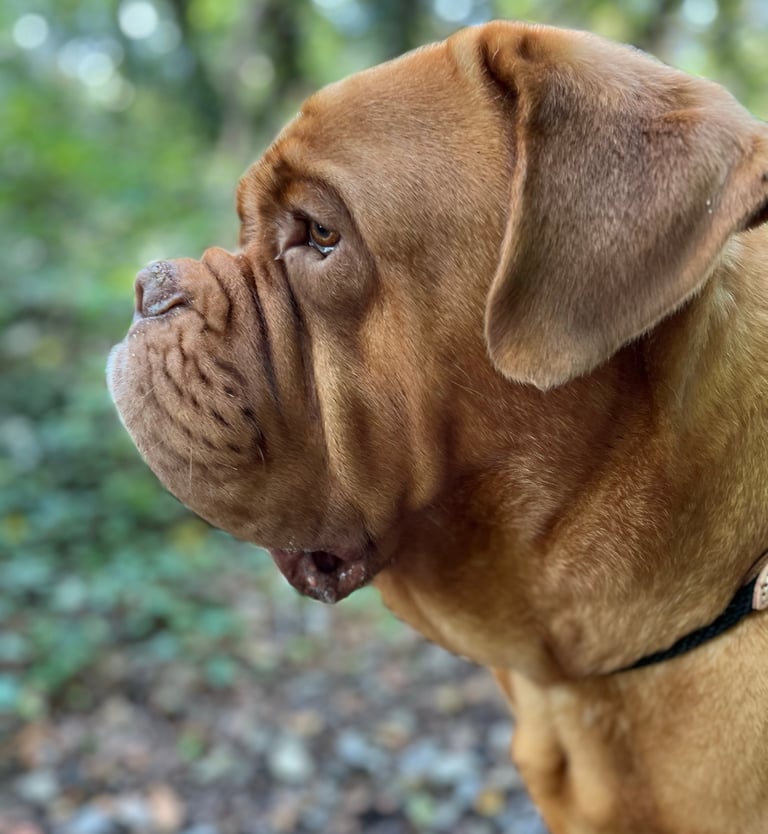

How to Clean Your Dog’s Ears: Step-by-Step Guide with Tips for All Ear Types
Keeping your dog’s ears clean isn’t just about hygiene—it’s an essential part of their health. Dirty ears can lead to discomfort, infections, or even hearing loss if left untreated. Fortunately, regular ear cleaning is simple once you know how to do it properly.
In this post, we’ll explore why dogs’ ears get dirty, the different types of ear shapes and what they mean for cleaning, signs of ear trouble, and when it’s time to call the vet. We’ll also walk you through the best types of ear cleaners, a step-by-step cleaning guide and some trusted product recommendations.
🐶 Why Do We Need to Clean Our Dog’s Ears?
Dogs use their ears to listen, express emotions, and balance—but their ear canals are deeper and more curved than ours. This makes them excellent at trapping debris, moisture, and wax, which can lead to infections.
As a Dogue de Bordeaux owner, I’ve learned firsthand how important ear care is. Their large, heavy ear flaps create the perfect warm, moist environment for yeast to thrive. I have to clean all of my Dogue’s ears regularly to prevent buildup and irritation—if I skip even a week, I can smell that telltale yeast or see them scratching more than usual.
Routine ear cleaning:
Prevents bacterial and yeast infections
Removes excess wax and dirt
Reduces itching and head shaking
Keeps ears smelling fresh
🧼 Why Do Dogs’ Ears Get Dirty?
There are several reasons your dog’s ears may collect gunk:
Wax buildup: Dogs naturally produce earwax, and some breeds overproduce.
Moisture: Dogs who swim or get frequent baths are prone to “swimmer’s ear.”
Allergies: Can trigger inflammation and excess wax.
Environment: Rolling in dirt or dusty trails.
Parasites: Mites and other pests can irritate the ears.
👂 Different Dog Ear Shapes (and Why They Matter)
Not all ears are created equal—some shapes are more prone to issues:
Floppy Ears (e.g., Cocker Spaniels, Basset Hounds): Trap moisture and limit airflow, increasing infection risk.
Erect Ears (e.g., German Shepherds, Huskies): Get better airflow, but collect dust and pollen.
Semi-Erect or Folded Ears (e.g., Beagles, DDB, Labradors): A balance between the two, still need regular checks.
Hairy Ears (e.g., Poodles, Schnauzers): Hair inside the ear canal can trap wax and debris.
Understanding your dog’s ear type helps tailor your cleaning schedule and tools.
⚠️ What to Watch Out For
You should inspect your dog’s ears weekly. Look for:
Redness or swelling
Bad odor (like sour dough or vinegar)
Discharge (brown, black, yellow, or bloody)
Excess scratching or pawing at the ears
Head tilting or shaking
Sensitivity or pain when touched
🩺 When to Call the Vet
While routine cleanings can prevent problems, some issues need professional care. Contact your vet if you notice:
Persistent bad smell even after cleaning
Bloody discharge or thick pus
Dog shows signs of pain or keeps their head tilted
Chronic infections (especially in certain breeds)
Never attempt to treat an active infection at home without veterinary guidance.
🧴 Types of Dog Ear Cleaning Solutions
Not all ear cleaners are created equal. Choose based on your dog’s needs:
Enzymatic Cleaners: Break down wax and debris with gentle enzymes.
Drying Solutions: Great for dogs who swim; helps prevent moisture buildup.
Medicated Cleaners: Vet-prescribed for yeast, bacteria, or mites.
Natural Solutions: Made with ingredients like witch hazel, aloe, or tea tree (be cautious—some oils are toxic to pets).
❌ Avoid: Alcohol, hydrogen peroxide, or vinegar unless recommended by a vet—they can dry or irritate the ear canal.
🐾 Step-by-Step Ear Cleaning Guide
You’ll need:
A good ear cleaning solution
Cotton pads
Treats (for distraction and rewards!)
Optional: towel or leash if your dog tends to squirm
Step 1: Prepare your dog.
Choose a quiet area. Gently hold your dog still and offer a treat for cooperation.
Step 2: Apply the solution.
Lift the ear flap and fill the canal with the cleaning solution. Don’t let the applicator touch the skin directly.
Step 3: Massage the base of the ear.
Do this for 20–30 seconds to break up debris. You’ll hear a “squishing” sound.
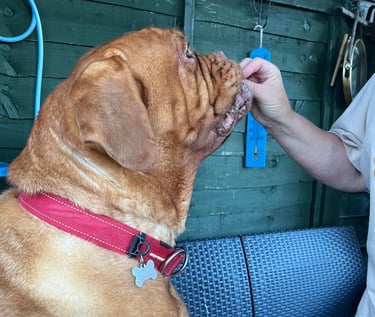

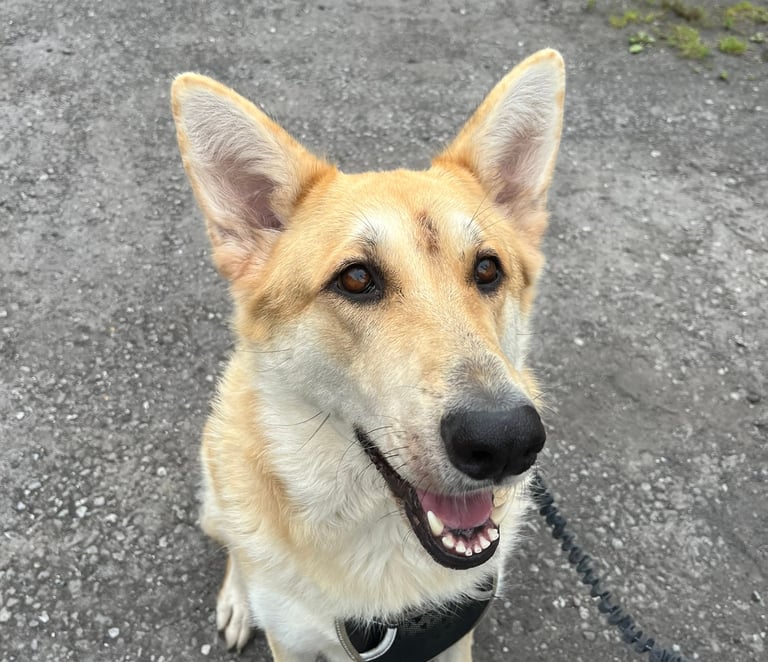

Step 4: Let your dog shake.
This helps bring debris to the surface.
Step 5: Wipe the outer ear.
Use cotton or gauze to gently wipe away dirt and fluid. Never insert Q-tips into the ear canal.
Step 6: Repeat on the other ear.
Give another treat and lots of praise!
🐕🦺Our Favorite Products
Below are some ear care products I personally used and recommend. They’re effective, easy to use, and pup-approved in my house!
1. VETIQ Ear Cleaner Solution #Ad
Type: Mild, non-medicated ear cleansing solution
Best For: Routine maintenance and gentle cleaning
This gentle, alcohol-free solution helps dissolve wax and remove debris without irritating the ear canal. It contains soothing ingredients like chamomile and aloe vera, making it ideal for regular use on dogs with sensitive ears or no underlying infections.
Why I Use It:
It’s gentle, affordable, and doesn’t irritate my dogs’ ears—even my Dogue de Bordeaux with sensitive skin. Perfect for routine weekly cleaning.
2. Otodine Ear Cleaner Solution #Ad
Type: Medicated antibacterial/antifungal cleaner
Best For: Managing bacterial and yeast infections
Otodine is a veterinary-recommended ear cleaner containing chlorhexidine and Tris-EDTA. It's especially effective for dogs prone to chronic ear infections, and is often used before or alongside prescribed ear drops. Not intended for routine cleaning—more of a treatment aid.
Why I Use It:
This is my go-to when I notice signs of yeast or bacterial buildup. It’s strong but safe, and has really helped prevent recurring infections in my floppy-eared breeds.
3. CleanAural Ear Cleaning Solution #Ad
Type: Veterinary-formulated general cleaner
Best For: Regular cleaning and odor control
CleanAural is a gentle, pH-balanced solution suitable for routine cleaning, especially in dogs with wax buildup or smelly ears. It helps break down wax while being kind to the ear's natural flora. Available in formulas for both dogs and cats.
Why I Use It:
I love how well it breaks down wax without drying out the ears. It’s effective for smelly ears, and the pH-balanced formula gives me peace of mind. Available in sensitive.
4. Bugalugs Ear Wash Cleansing Drops #Ad
Type: Mild, pH-balanced ear cleaner
Best For: Routine cleaning, odor control, and a fresh scent
This uplifting citrus-scented ear wash uses a gentle, alcohol-free formula to remove wax, dirt, and debris while helping to neutralize odor. Infused with bergamot, lemon, and grapefruit, it leaves your dog’s ears smelling fresh without overwhelming sensitive noses. Aloe vera and witch hazel help calm irritation, making it ideal for regular maintenance—especially for dogs with sensitive skin or mild wax buildup.
Why I Use It:
I like using this one in between deep cleans—it leaves a fresh scent and keeps my dogs’ ears from getting that “doggy” smell. Plus, it’s gentle and natural.
5. Vet’s Best Ear Relief Finger Wipes #Ad
Type: Pre-moistened natural cleansing wipes
Best For: Surface-level cleaning and quick touch-ups
These plant-based wipes are great for wiping the outer ear and removing visible dirt and wax. Infused with witch hazel, aloe vera, and tea tree oil (in safe quantities), they’re a quick, non-invasive option for dogs who dislike liquid cleaners. Best for mild maintenance, not deep cleaning.
Why I Use It:
These are a lifesaver for quick wipe-downs between cleanings or after walks. Great for dogs who hate drops—and they smell nice too!
6. 100% Cotton Pads #Ad
Why I Use Them:
They’re softer and more durable than cotton balls, and I’ve never had them leave lint behind. Ideal for gentle, precise cleaning. We use large oval, hypoallergenic, lint free options.
Disclosure: Some of the links above are affiliate links. This means I may earn a small commission at no extra cost to you if you purchase through them. I only recommend products I personally use and trust.
🛒 Found something helpful? Let me know what works for your pup! These products have made a huge difference in my routine — and I hope they do the same for you.
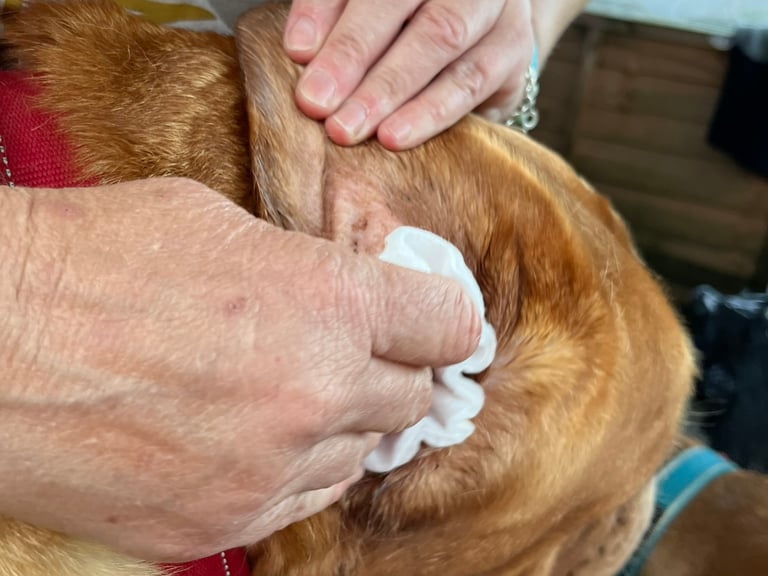

🐾Final Thoughts
Regular ear cleaning is one of the easiest ways to keep your dog healthy and happy. By staying proactive, you can prevent infections before they start and ensure your pup feels their best.
If you’re unsure about how often to clean your dog’s ears or which products are best, consult your veterinarian. Every dog is unique!
Have questions or tips of your own?
Drop a comment below or share your experience—let’s keep our furry friends healthy together!
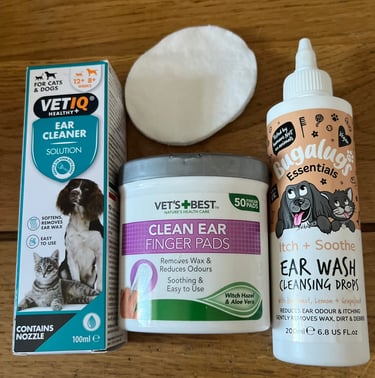

Quick tips
🦴 Tip: Tailor Ear Cleaning to Your Dog’s Breed
Floppy ears: Clean weekly, watch for moisture buildup
Hairy ears: Ask your groomer about trimming inside the ear
Upright ears: Check for dust and pollen, especially after walks
Heavy folds: Be extra gentle and thorough—yeast loves those creases!
🦴 Tailoring Ear Care to Your Dog’s Needs
No two dogs are the same—and their ears aren’t either! Here are some extra tips if your pup has special ear considerations.
🐩 For Hairy Inner Ears (like Poodles and Schnauzers):
Some dogs grow hair inside their ear canals, which can trap wax and moisture. If your dog has this, gently trim the hair or ask your groomer to help. Avoid plucking unless your vet recommends it—it can irritate the skin and lead to infection. Trim the inner ear hair as needed to improve airflow and reduce buildup.
🐕 For Deep Ear Canals (like Dogue de Bordeaux and Basset Hounds):
Clean weekly and ensure ears are fully dry after baths or swimming. Heavy ear flaps hold in warmth and moisture, making them more prone to yeast infections. They may need more frequent cleaning and more massage time to loosen wax.
🐕🦺For Upright Ears (like Huskies and German Shepherds):
These ears allow more airflow but also let in dust and pollen. Clean after hikes or dusty days.
🐶For Small or Nervous Dogs:
Try warming the solution slightly (just to body temperature) and speaking gently to help them relax during cleaning.
©Meo'sWorld
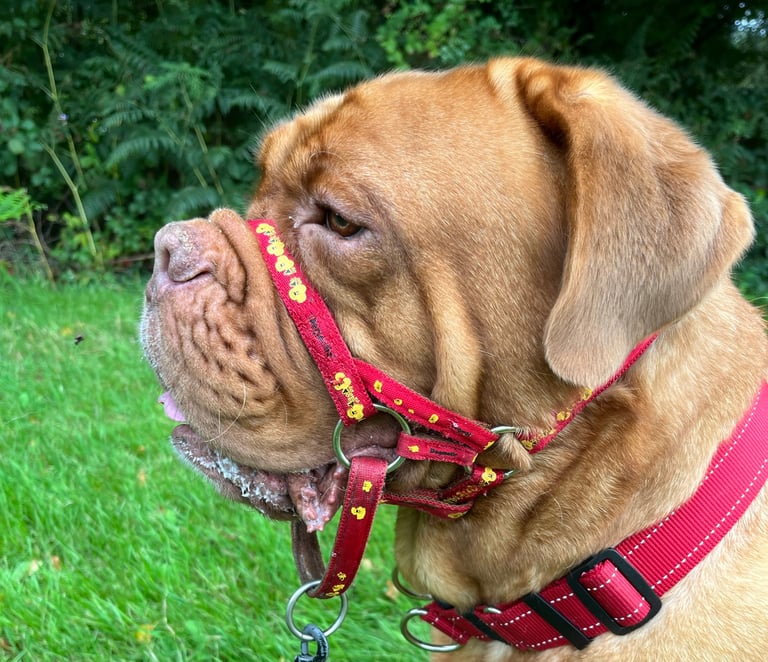

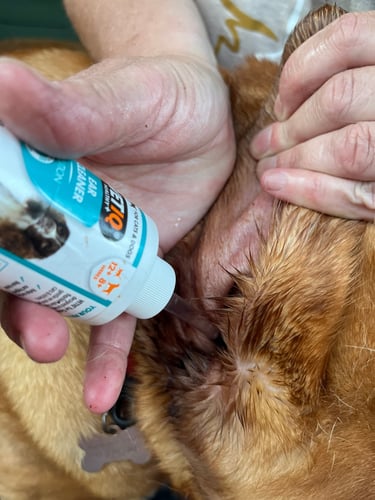

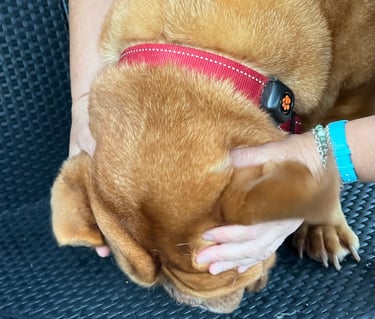

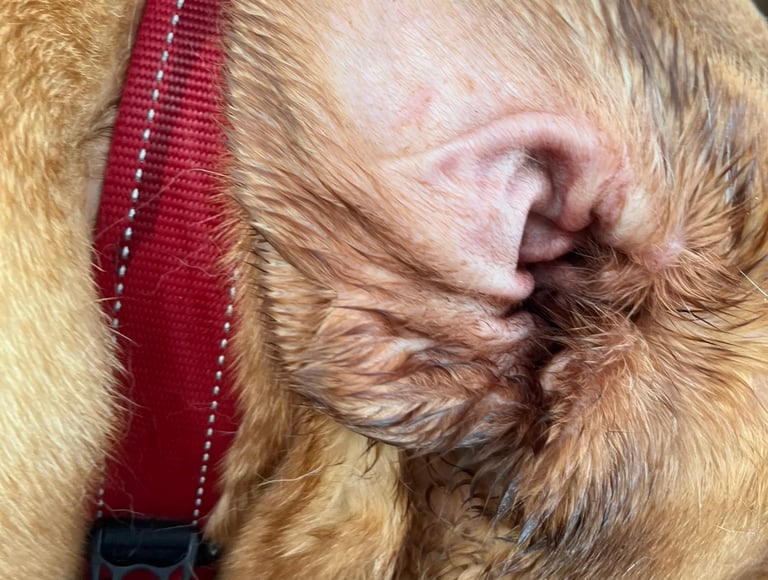

Meo's world
<--Awin verification 001-->
Bark
Fetch
meosworld@yahoo.com
© Meo's World 2025. All rights reserved.



